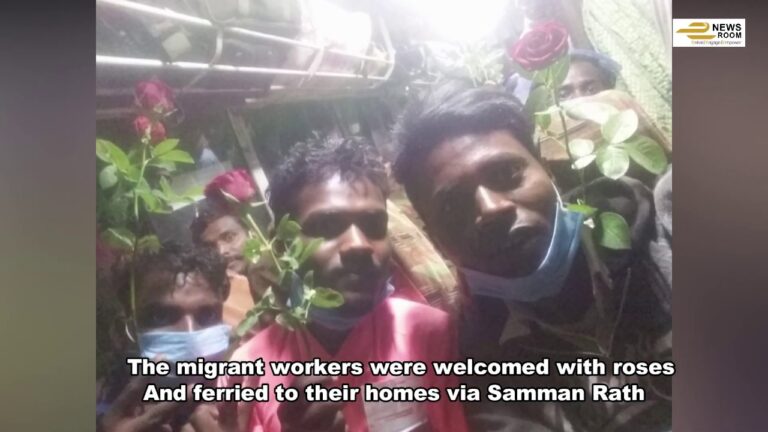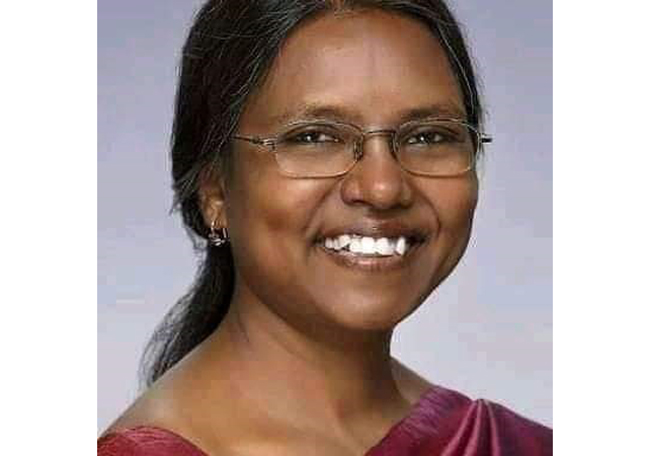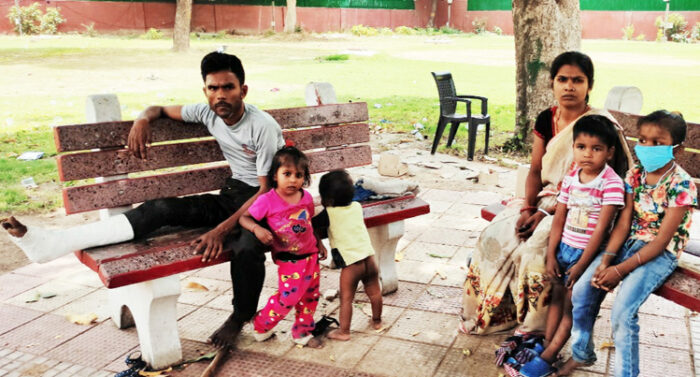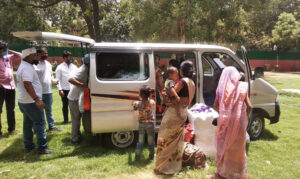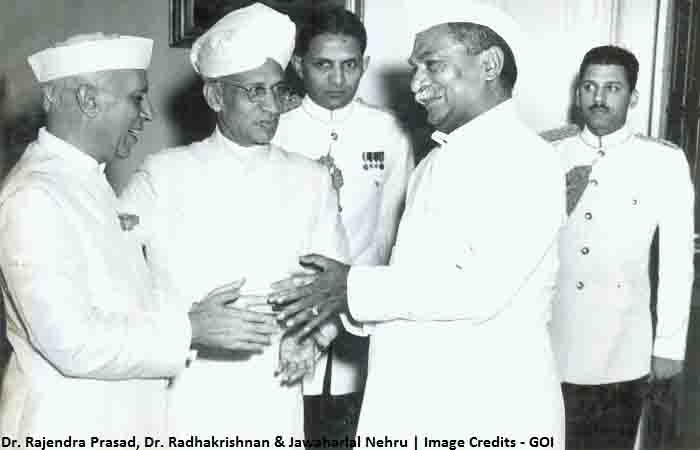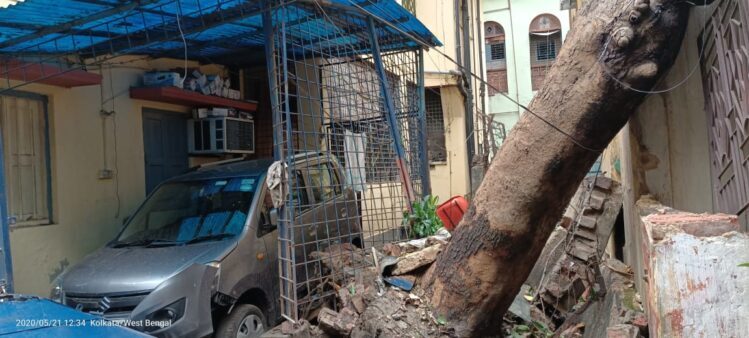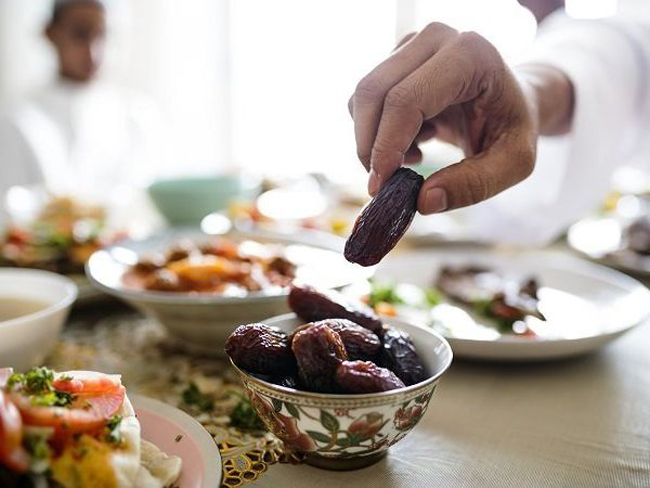With Covid-19 cases increasing exponentially in India and virtual shut down of daily Out Patient Department (OPD)s in almost all major hospitals across the country including AIIMS Delhi, PGI Chandigarh, KGMU, the cry to adopt and normalize digital OPDs in the country is getting louder. The daily burden of patients visiting hospitals for treatment of non-communicable diseases like diabetes, hypertension, obesity disorders and others is high. But the treatment of these ailments have come to a halt since the lockdown 1 was imposed in India. The Union Health Ministry itself in the month of March has advised to defer all elective surgeries and restrict normal functioning of daily OPDs due to fear of Coronavirus transmission and increase exposure to suspected patients of Covid-19. Under all these circumstances, remote consultations via phone calls, WhatsApp, SMS, video-calling is proving to be a big relief for healthcare service providers, as it limits the physician’s exposure to the disease. The situation has deteriorated due to shutdown of regular OPDs and extension of countrywide lockdown. Patients suffering from different ailments are feeling scared and helpless. Patients suffering from tuberculosis, cancer, HIV and regular dialysis are the worst affected. Routine patients are bearing the brunt of Covid-19 lockdown across India. The same is the case for patients suffering from psychiatric ailments like anxiety, depression, schizophrenia. Institute of Human Behavioural and Allied sciences (IHBAS) in Delhi, which is one of the largest psychiatric hospital in the country has a daily intake of around 1200-1400 patients. The number now has fallen to zero. Same is the case for every public hospital and private OPDs. With numbers of patients experiencing mental stigma during corona crisis is increasing regularly, the access to psychiatric help is very much limited due to closure of OPD services. One of the main reasons for it being the scare of probable disease transmission and lack of adequate personal protective gears for the doctors. India reports around 25 lakh plus active tuberculosis patients yearly and more than 4 lakh deaths- the highest in the world. Same is the case with cancer and kidney patients as regular chemotherapy and dialysis services are not accessible easily, especially in public hospitals which caters a big chunk of these patients and has presently shifted their focus towards Covid management. A better picture of it, will emerge only when we have a combined data from all the major public sector and private sector hospitals about the condition of patients who used to visit their OPDs during normal days. Where they have gone for treatment, how they responded, and who took care of them can only be commented if we have transparent post lockdown report from all individual hospitals. This will not only help in assessing the impact of closure of OPDs but also to devise future strategies in managing pandemic which poses high risk of contagious infection. Nevertheless it will help public health experts to address issues of managing large chunk of population suffering from different illnesses.
In the meantime, Medical Council of India (MCI) along with NITI Ayog also came up with detailed guidelines on different aspects of safe telemedicine practices in the country, thus legalising the telehealth services in the country. These guidelines would prove to be a morale booster for doctors aspiring to shift partially to telemedicine not only during Corona Age but also in post- Corona World. The guidelines published defines Telemedicine as “The delivery of healthcare services where distance is a critical factor, by all healthcare professionals using information & communication technologies for the exchange of valid information for diagnosis, treatment and prevention of diseases and injuries, research and evaluation, and the continuing education of healthcare providers, all the interests of advancing the health of individuals and their communities.’’ The telemedicine space in the country has seen rapid growth in recent times. Digital platforms like Cytopot, Practo, DocsApp, Lyberate among others. occupy good share in India’s telehealth space. Dr. Abhijeet Upadhyay, Founder of Cytopot said “Our aim is to provide faster and accessible quality health facility to all especially in remote areas by use of artificial intelligence and real time technologies with cost considerations.” Cytopot caters to the need of patients in state of Odisha and surrounding areas.
Providing in-person healthcare is a challenging and huge task both for medical fraternity as well as governments, particularly the large geographical distances and limited resources we have. One of the major benefits of digital OPDs will be saving of cost and effort especially of rural patients, as the need for travel to long distances for treatment will be minimized. Telemedicine in this scenario can provide an optimal solution for providing timely and faster access, reducing the costs related to distant travel. At the same time, it also reduces the inconvenience to family and caregivers and social factors associated. For regular, routine monitoring of cases and follow-up cases, digital consultation will definitely be a boon. The same will also reduce the burden on secondary hospitals, PHCs and Mohalla Clinic type models running in the country where minor ailments are managed. With telemedicine, there is higher probability of proper maintenance of records and documentation hence minimizes the likelihood of missing out advice from the doctor and healthcare worker. Digital consultation practices provides patient’s safety as well as health workers safety especially during risk of contagious infections such as Covid-19.
Disasters and pandemics pose unique challenges in providing healthcare both for the government and medical staff. But with adversities, also comes the opportunities to convert weaknesses into strengths and serve the mankind. Though telemedicine will not solve all problems but it is well suited for scenarios in which teleconsultation can easily evaluate patients and provide them effective management plan without exposing the health staff to risk of virus transmission. Broad speciality medical subjects such as Dermatology, Psychiatry, Radiology, minor ailments in Pediatrics, Medicine and ENT. were already focusing on telemedicine practices much before the emergence of Covid-19 pandemic. Teledermatology and telepsychiatry were the two main domains which had good number of consumer base before Corona. A good share of it was managed by Digital health Providing companies such as Remedico for skin problems based out in Bangalore and MentDoc in Psychiatry.. The Covid-19 pandemic is nowhere to go in near future before proper treatment protocol and vaccine comes out. Nevertheless its time for healthcare providers and government agencies to devise different ways in tackling the inflow of patients who are suffering from different non-communicable diseases as ignoring them for long and shutting of regular OPDs is not a viable sustainable option. Therefore Its highly important to build up an effective system of telemedicine health services and digital solutions to counter the emerging problem. Eminent medical practitioner and former National President of Indian Medical Association (IMA) DR KK Agarwal is of the view that covid-19 is somehow behaving like Spanish Flu and it might take around 2 years time to normalize the things and therefore we must be ready for adaptations to Corona Age for quite some time.
The telemedicine practice guidelines published by the Board Of Governors in Suppression Of Medical Council OF India lays emphasis on following aspects:
- According to the mode of Communication, the telemedicine applications are classified into Video (Apps, Video-on chat platforms, Skype, Face-Time among others) Audio (Phone, VOIP, Apps, etc) Text based (including general messaging via SMS, Messenger, Google Hangouts).
- Guidelines states, “The professional judgement of a registered medical practitioner should be the guiding principle for all telemedicine consultations. Seven elements mentioned under it to be considered before any telemedicine consultation includes context, identification of RMP and patient, mode of communication, consent, type of consultation, patient evaluation and patient management.
- Prescribing medications via telemedicine consultations is at the professional discretion of the RMP. It entails the same professional accountability as in the traditional in-person consult. Only those medicines categorized under list O, A and B falling under different criterias can be prescribed via telemedicine consultation. Drugs included under Prohibited list could not be prescribed anyhow and may amount to legal proceedings.
- One of the most important aspect of guidelines include the implementation of principles of medical ethics, including professional norms for protecting patient privacy and confidentiality as per IMC Act shall be binding and must be upheld and practiced.
- The guidelines separately address tech platforms that enable telemedicine services. Such platforms can list a doctor only after due diligence verifying the doctor’s credentials. The guidelines also allow the use of Artificial Intelligence (AI) and Machine learning tools to assist a medical practitioner in counselling a patient. However, AI cannot be used directly to counsel the patients.
Nevertheless, telemedicine has its own advantages and is the need of hour but at the same time negative aspects associated with it cannot be ignored blindly and therefore they also requires critical analysis. As a doctor myself just like the seniors from our community we believe that the first drawback of telemedicine is its inability to address the issue of Clinical examination of the patient in person. No technology could replace the examination skills and diagnosis made thereafter by an expert physician which gets limited while providing teleconsultation facility. Many patients prefer a more personal or face-to-face relationship for better understanding and treatment. This has limited scope with telemedicine.
Another point of concern is the availability and cost considerations of IT-based telehealth services. There are chances that for a provider it can be expensive to set up these systems and maintain them annually especially for small healthcare facilities.
The accessibility to these services is also a major concern before turning towards it, especially in rural India. Still today, there is huge number of people who don’t have access to smartphones and are unable to utilize mobile apps services effectively. Digital India is a distant dream not because of lack of mobile internet facilities but due to improper usage, and drawbacks associated with it which needs to be fixed. It is possible for a broadband connections to malfunction, video chatting gadgets start functioning improperly among others.
The issues of slow speed networks, mobile data theft, hacking, misuse of patient’s medical records and ethical considerations associated with it are some of the problems which could not be ignored at all before switching in large towards telemedicine apps. It requires a robust system and guidelines being provided by the government to both public and private telehealth providers so that trust building is developed and more patients get benefitted by it. Health facilities providing these services also need to spend additional time as well as money for training the experts in order to enrich them with much needed technical knowledge. It will make healthcare recruitment a challenging task.
Despite all odds, telemedicine is here to stay and Corona crisis has given it a required push with more companies joining the ivy-league. Many of the stop-gap models for the next few months could become our new normal. This current push for telemedicine could lead to wide adoption of digital health services in the long run. It will not only help in popularizing remote consultations but also develop integrated network of digital health solutions that connect patients, doctors, diagnostic labs and e-pharmacies. Mobile pharmacies will boom and so the biomedical health companies generating more revenue as well as employment. Their success will largely depend on how cost-effective they will prove and on the scale of services being provides to address public health problems which the country is facing. Success will definitely be more if these solutions bring smiles on marginalised sections of country and not only end up becoming a capitalist profit generating module. 1 mg, NeTMeds, PharmEasy will have a bigger role to play in coming future.
The technological innovations in digital health domain and their immense potential for shaping clinical practices cannot be ignored. But without serious modifications to our healthcare delivery system and telehealth policy, its fair to ask how far mobile apps, artificial intelligence, big data and algorithms will take Indian health services forward. The Country already had a National Digital Health Blueprint which was released last year by Health Minister Dr. Harsh Vardhan. This in itself is an achievement as we are among the very few countries to have a detailed published Digital Health Plan. Time is now to act upon it to address different issues crippling the public health system in country and how by the means of digital health tools we can fix them all. Question is are our institutions and policy makers up to the task of striking the right balance between sharing of data and protecting patient’s privacy or will the breakneck speed of digital technology overwhelm them? Will automation and real time solutions help patients attain positive and long term changes in their health domain, or will quick gains ultimately succumb to and be reversed by the same old obstacles of inadequate resources inside and outside our hospitals and clinics? Answers need to be searched for a better, healthier India!!
Views expressed here are author’s personal opinion




